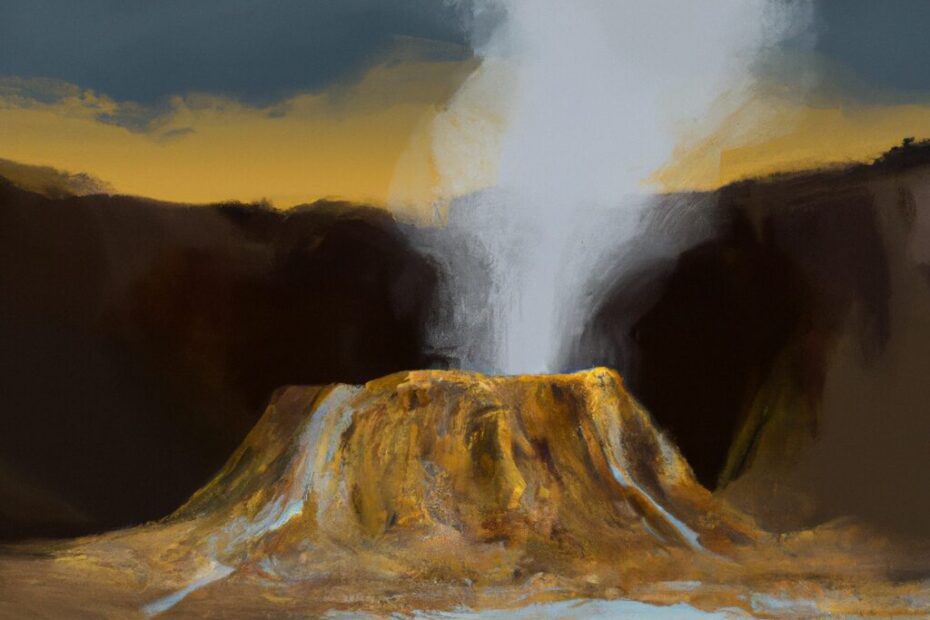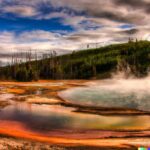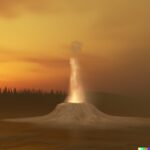Are you curious about how geysers work and what causes these natural wonders to erupt? From their formation to their eruption process and effects, this article will explore everything you need to know about geysers. Discover the different types of geysers, where they can be found, and the fascinating science behind their eruptions. Get ready to dive into the captivating world of geysers and uncover the mysteries of these powerful natural phenomena.
What Is a Geyser?
A geyser is a fascinating natural phenomenon that involves hot water and steam erupting under pressure from underground due to the presence of magma.
This geological marvel occurs when water seeps through fissures in the Earth’s crust and reaches areas heated by magma deep below. As the water is heated, it creates steam that builds up pressure within the rock chambers, eventually leading to a powerful expulsion of hot water and steam through the geyser’s vent. This process showcases the intricate relationship between geothermal activity and the Earth’s internal heat dynamics, demonstrating the immense forces at play beneath the surface of our planet.
How Are Geysers Formed?
Geysers are formed through a combination of geological processes, typically found in regions like Yellowstone and Iceland, where volcanic heat interacts with underground water to create hydrothermal systems.
This volcanic influence results in the heating of water deep within the Earth’s crust, causing it to become superheated and rise towards the surface through a conduit. When this boiling water reaches the surface, it erupts in a spectacular display of steam and water, characteristic of geysers. The presence of dissolved silica in the water leads to the formation of geyserite, a mineral deposit that contributes to the intricate and unique formations seen in these geothermal areas.
Where Can Geysers Be Found?
Geysers can be found in areas with underground aquifers, intricate plumbing systems of rock fractures and conduits, and mineral-rich environments, with notable examples including Geysir and Strokkur in Iceland.
These geological wonders are often located in regions characterized by volcanic activity and tectonic plate movement, such as the geothermal hotspot of Yellowstone National Park in the United States or the geologically active areas of New Zealand. The presence of specific minerals such as silica contributes to the stunning visual displays seen during geyser eruptions. The underground thermal features create optimal conditions for unique bacteria to thrive, adding to the distinctiveness of these natural phenomena.
What Are the Different Types of Geysers?
There are several distinct types of geysers, each characterized by factors such as dissolved solids, thermal energy sources, geyserite formations, and mechanisms to maintain pressure within the plumbing system.
Geysers can also be classified based on their overflow patterns, which vary in terms of frequency and volume. Various theories related to geyser eruptions, such as the role of trapped steam pockets and thermal convection in maintaining pressure, offer insight into the unique dynamics of these natural phenomena. Exploring these classifications provides a deeper understanding of the geological forces at play and the intricate processes that govern the behavior of geysers across different regions.
Cone Geysers
Cone geysers are a common type of geyser characterized by their cone-shaped formations, often shaped by ongoing geothermal activity and the build-up of mineral deposits on the geyser cone itself. Cone geysers are categorized as shooting a narrow jet of water.
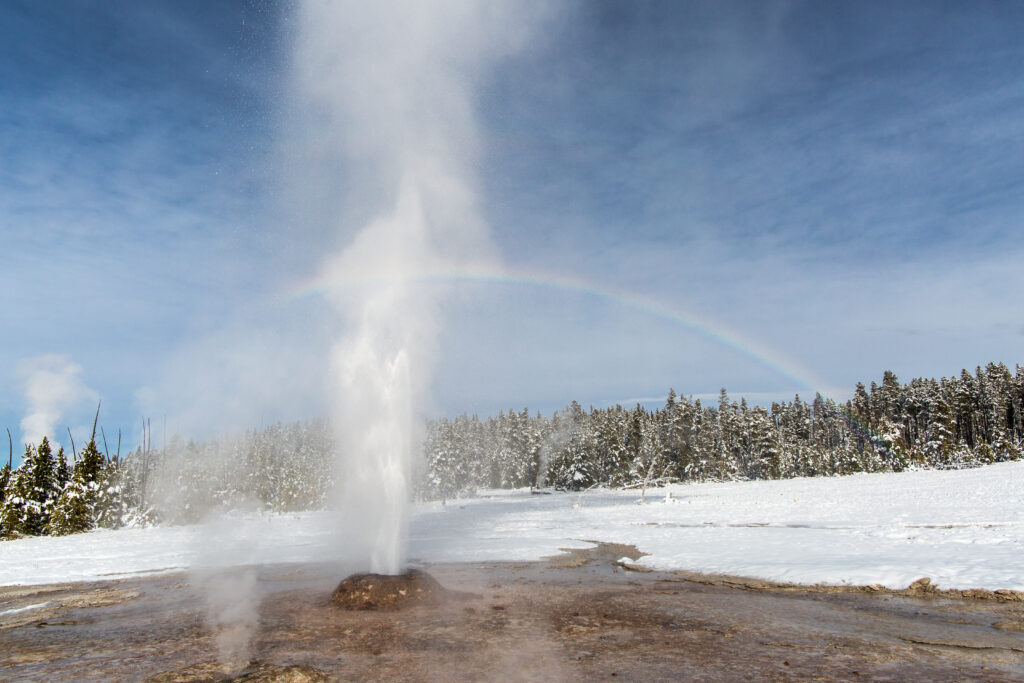
These unique geothermal features are fascinating natural wonders formed over time through the interaction of heated underground water with the Earth’s surface. The formation of cone geysers is closely linked to the presence of hot magma beneath the Earth’s crust, which heats up water underground, creating pressure that eventually propels water and steam through vents on the geyser cone. As this mixture of water and steam erupts, it carries minerals from below the surface, which gradually accumulate and solidify, contributing to the distinct cone shape of these geysers.
Fountain Geysers
Fountain geysers exhibit eruptive behavior where superheated water is ejected into the air in various directions, driven by underlying geothermal systems and the dynamics of hydrogeology within the geyser’s plumbing system.
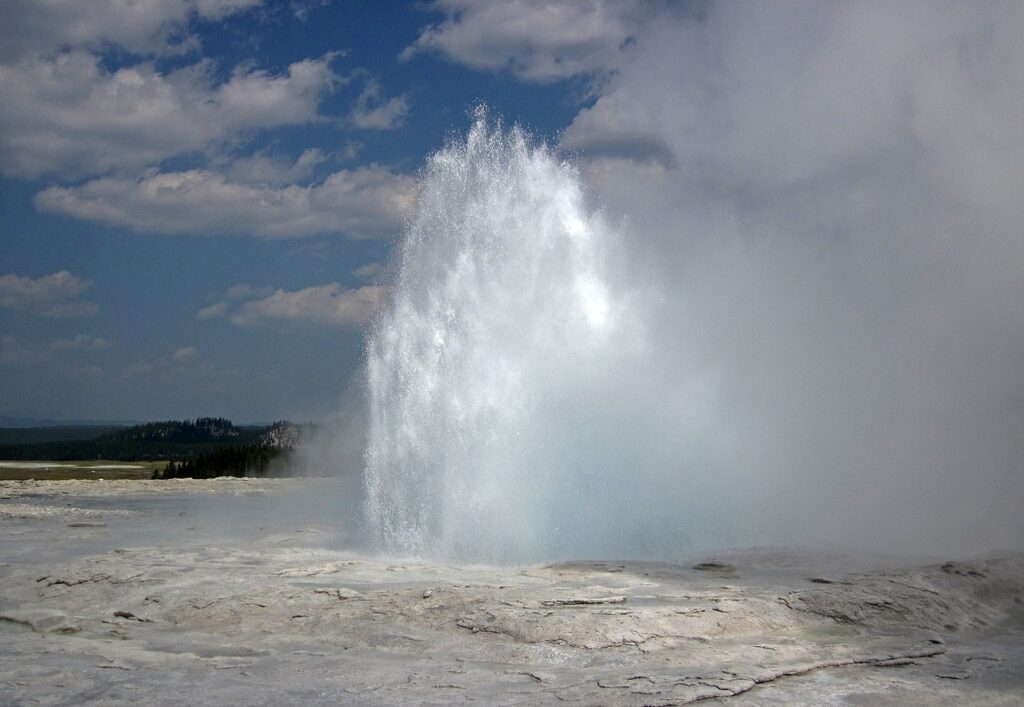
The eruptive nature of fountain geysers is a captivating display of the Earth’s natural forces at work. As the superheated water builds up pressure underground, it eventually spurts out with great force through the narrow openings of the geyser’s vent. This process is heavily influenced by the intricate network of underground hydrogeological pathways that dictate the flow and accumulation of water within the geyser. Understanding these hydrogeological factors is crucial in predicting and analyzing the behavior of fountain geysers, offering insights into the fascinating phenomenon of water ejection seen in these geothermal wonders.
What Causes a Geyser to Erupt?
The eruption of a geyser is triggered by a combination of factors such as heat sources from rock fractures, tectonic activity influencing subsurface conditions, and the buildup of pressure within the geyser system.
When rock fractures occur beneath the Earth’s surface, they create pathways for hot fluids to ascend towards the geyser chambers. This heat, intensified by the Earth’s internal processes, contributes to the boiling and expansion of water within the geyser reservoir. Tectonic movements play a crucial role in altering the subsurface environment and can lead to changes in pressure gradients. As pressure accumulates within the geyser structure, the superheated water becomes more volatile, eventually resulting in the spectacular eruption of the geyser.
Heat Source
The heat source responsible for geyser eruptions stems from the transfer of thermal energy through geologic formations, leading to the establishment of a geothermal gradient that drives the circulation of superheated water within the geyser system.
This intricate process involves the interaction of various factors, such as the heat transfer mechanisms within the Earth’s crust, the specific composition of the geologic formations surrounding the geyser, and the presence of conduits that allow for the movement of the pressurized water and steam.
The geothermal gradient plays a crucial role in creating the conditions necessary for the accumulation of heat deep beneath the surface, setting the stage for the explosive release of energy that characterizes geyser eruptions.
Water Reservoir
The presence of a water reservoir with temperatures exceeding the boiling point, driven by convective currents within a geothermal reservoir, plays a crucial role in the eruption cycle of a geyser.
In such geothermal reservoirs, the high-temperature conditions cause the water to reach a point where it transitions from liquid to vapor, building up pressure until the geyser finally erupts. This cycle is a delicate balance of heat transfer and pressure release, where the convection currents serve as the catalyst for the dramatic display of natural power. Understanding the intricacies of how these geothermal reservoirs function is essential for predicting and studying geyser behavior, shedding light on the fascinating geological processes at play beneath the Earth’s surface.
Constriction
Constrictions within the geyser’s plumbing system can lead to pressure buildups and subsequent releases, where interactions between crustal water flow, mechanical properties, and pressure release mechanisms influence the eruption patterns of geysers.
The constriction points along the geyser’s plumbing network act as critical junctures where the flow dynamics of crustal water undergo significant transformations. These points are where the mechanics of the system come into play, influencing the pressure variations that ultimately dictate the timing and intensity of geyser eruptions. Through a combination of pressure reduction mechanisms and natural flow adjustments, these constrictions play a key role in modulating the explosive energy that drives the fascinating eruptive cycles observed in geothermal features.
What Is the Eruption Process of a Geyser?
The eruption process of a geyser is a mesmerizing display of geothermal energy in action, creating natural wonders through the release of geothermal steam from the Earth’s interior.
As the geothermal system of the geyser undergoes pressure buildup, it reaches a boiling point triggering the eruption phase. This phase typically starts with a prelude of rumbling sounds and increased steam production. Subsequently, a powerful jet of water and steam shoots up into the air, sometimes reaching spectacular heights. The force behind this remarkable display is rooted in the heat stored beneath the Earth’s surface, driving the intermittent cycle of geyser eruptions. Visitors often find themselves captivated by the sheer raw power and beauty of geothermal steam emissions during this phase of the eruption cycle.
Filling Phase
During the filling phase of a geyser eruption cycle, hot spring water accumulates within the geyser system, fostering unique ecosystems with aquatic organisms and sediment deposition.
As the hot spring water slowly fills the underground chambers of the geyser, it creates a warm and nutrient-rich environment that sustains a variety of microbial life, algae, and even small invertebrates. These aquatic organisms thrive in the geyser’s unique conditions, adapting to the extreme temperatures and chemical composition of the water.
The constant deposition of sediments carried along by the hot spring water further contributes to the shaping of the geyser’s surrounding landscape, creating layers of mineral deposits over time.
Heating Phase
The heating phase of a geyser’s eruption cycle involves the interaction of hydrothermal fluids with mineral deposits, leading to the formation of thermal spring basins that play a critical role in the geyser’s preparatory process for eruption.
These mineral deposits act as reservoirs of heat, absorbing the energy from the hydrothermal fluids that seep through them. As the fluids travel through the geological layers, they pick up valuable minerals and heat, transforming the thermal spring basins into crucial components of the geyser’s heating mechanism. The gradual accumulation of heat within these basins creates the ideal conditions necessary for the geyser’s eventual eruption, providing the necessary pressure and temperature build-up for the spectacular display of natural energy.
Erupting Phase
The erupting phase of a geyser involves thermal conduction within the plumbing system, resulting in spectacular displays of water and steam, as seen in notable examples like Fountain Geyser and Steamboat Geyser.
Fountain Geyser, for instance, is known for its powerful eruptions that can reach impressive heights, showcasing the intricate workings of thermal conduction. As the superheated water rises through the geyser’s narrow plumbing system, it encounters a sudden drop in pressure, causing the water to explosively transform into steam. The expulsion of this steam, combined with the geyser’s unique geological features, results in a mesmerizing sight that captivates onlookers.
What Are the Effects of Geyser Eruptions?
Geyser eruptions have profound effects on the environment, influencing the landscape through mechanisms driven by heat sources, geological mechanics, and resulting alterations in the surrounding terrain.
These eruptions not only reshape the topography but also introduce new niches for flora and fauna to thrive. The heat sources involved in geyser eruptions result in the creation of unique habitats, fostering the adaptation of specialized species. The mechanical interactions accompanying these events lead to the redistribution of sediments and the formation of geothermal features like hot springs, which further transform the ecosystem. Geyser eruptions play a dynamic role in sculpting and diversifying landscapes, showcasing the intricate dance between natural forces.
Formation of Sinter Terraces
The formation of sinter terraces is a direct result of geyser processes interacting with underground aquifers, where thermal radiation and mineral deposition create these distinctive geological formations.
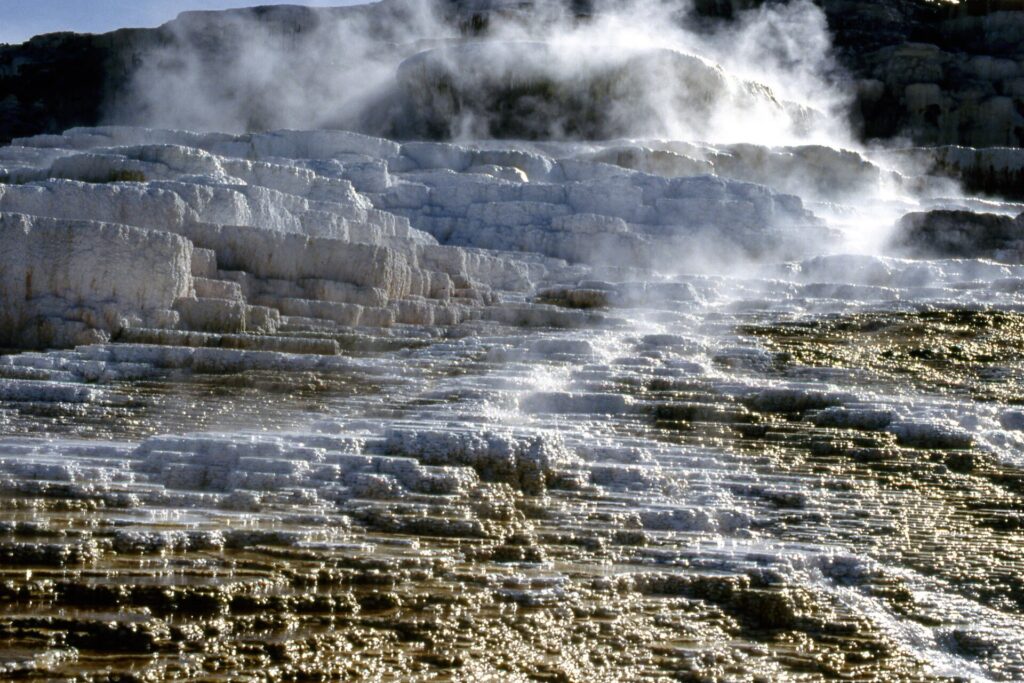
As geysers erupt with hot water and steam, they tap into underground aquifers rich in dissolved minerals. When the scalding water reaches the surface, it loses heat through thermal radiation, causing rapid cooling and mineral precipitation. Over time, this continuous cycle of heating, cooling, and mineral accumulation builds up the intricate structures of sinter terraces. The minerals, usually silicates and carbonates, solidify and cement together, creating the characteristic terraces that attract awe and admiration from visitors around the world.
Changes in the Surrounding Landscape
Geyser eruptions can lead to noticeable changes in the surrounding landscape, characterized by the emergence of hot springs, boiling water features, and enhanced hydrothermal circulation patterns resulting from the geyser activity.
Hot springs formed after geyser eruptions often exhibit vibrant colors, indicative of the minerals they carry from deep within the earth. The boiling water phenomena associated with these eruptions create a mesmerizing spectacle, with steam rising and creating a mystical aura around the area.
The interaction of geysers intensifies hydrothermal circulation, fostering unique ecosystems that thrive in these extreme conditions. This interconnected web of geothermal activity shapes the land, creating a dynamic environment full of geological wonders waiting to be explored.
Potential Dangers to Nearby Areas
Geyser eruptions pose potential dangers to nearby areas, with the risk of superheated water discharge and geothermal energy releases linked to the geyser’s eruptive cycle and the transfer of heat from the Earth’s core.
These hazards are not limited to just the immediate vicinity of the geyser. The superheated water emissions can scald and cause serious burns to individuals who come into contact with them, and the geothermal energy releases may disrupt the delicate balance of the ecosystem.
The cyclical nature of geyser eruptions creates an unpredictable environment, where the built-up pressure can result in explosive events, sending debris flying in all directions. Understanding these risks is crucial for ensuring the safety of both the environment and anyone living near geyser fields.
Last Updated on February 18, 2024 by Jon Waraas – Originally Posted: February 11, 2024

I’m Jon Waraas, and I’ve been navigating the online world since 2006. By day, I’m the proud owner of some eCommerce gems, and by night, I’m the voice behind the adventures on Waraas.Com.
My heart, however, belongs to the wild beauty of Yellowstone National Park. I’ve got a collection of websites dedicated to sharing the wonders of this natural masterpiece. Oh, and did I mention? I’m currently building my own cabin inside the ghost town of Gilmore, Idaho – a cabin with tales to tell!
When I’m not immersed in the digital realm, you’ll find me lacing up my boots for a good hike or setting up camp under the star-studded sky.
